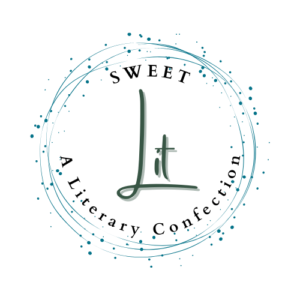Faraway/Nearby
In the modern art wing of the Metropolitan Museum, I watch a woman make her way to a bench set in a dim corner. She sheds a sweater and lowers her right hand, palm flat on cool surface, before she tilts one hip and then the other, finally settling with a demure grunt. She reaches into a bag and pulls out a peach, maybe an apricot. A piece of fruit, anyway, the very color of the sky in Georgia O’Keeffe’s Faraway, Nearby, which my daughter is standing next to. My oldest daughter, who rests against a rare blank space on the museum wall, leaning a bit too close to the painting. Her hip is jutted in an unconscious emulation of the antler rack in the center of the canvas, bone that looks to me sharp enough to slice skin, and her own child is twined around her body, both granddaughter and daughter staring out at who knows what.
Minutes earlier, stepping away from Egon Schiele’s self-portrait, those piercing eyes, those twisted limbs, we’d had words. A tense exchange because my granddaughter wanted to leave, and I wanted to stay. I carped in a sharper tone than I intended—we’ve come such a long way, can’t we forge on?—and my daughter glared at this testiness. I shut my mouth and thought, well, there it is: the first fuel for an inevitable blowup between us. Indeed, it would come near the end of our trip, when it was no longer possible to hold either tongue.
Our strife is common, an uncanny mother-daughter tendency to misinterpret, to misunderstand, to jangle nerves, an old habit that nags its way into our time together no matter how brightly we set off. It’s also tiresome. So I focus on the woman with the piece of fruit who sits as still as a still life. Within seconds, her three adult children—the resemblance is uncanny—flutter to her. From various points in the room, they beam toward this mother in distress. Once they circle-up, she wordlessly slips to the floor like unloosed drapery, like a silk dress unzipped and slithering to the ground. Two teenagers blend in, so now I see the woman only in flashes between the bodies of her people. I can tell she’s eating the fruit, teeth sunk into flesh, pulp on her lips, while her guards watch for the museum’s guard posted at the doorway, a luggish man who snaps at a man for using his phone to photograph a Rothko that yawns its unkempt lines across the length of the wall.
The museum guard does not view the Woman Eating a Peach. He doesn’t see one of her daughters dipping toward her to wipe juice from her chin. He doesn’t wonder, as I do, how this family remains devoted to their matriarch without a tinge of impatience, without any one of them seething, Oh good god, this again?
As I have each time I’ve stood in front of a piece of art, I wonder how I’m supposed to feel. Is this a quiver of envy inside me—jealousy of the woman whose every movement is attended to? Or am I leaning toward a sentiment I know well, the self-congratulatory pat I give myself for not burdening my offspring with my troubles. Because of course this isn’t true: I burden them all the time and maybe doubly so when I profess I don’t.
So what is it that swells in me now? Fear, I suppose. This daughter across the room: what if she fails to notice when the time comes that I must eat the peach? What if she and her sisters aren’t there to fold around me when I’m the old mother pooling to the floor in an attempt to right myself again?
I worry my daughters won’t catch the bumpy stone when it falls from my mouth, as the daughter of this woman does now. She unfolds a tissue on her palm and the mother plucks the pit from her tongue and places it there, where it is wrapped tight as a cocoon. The daughter slips the bundle into her own pocket, her trouble now, and helps the older woman to her feet.
I nod at my own family, Let’s go, it’s time. Already I sense the bustle and pinched air of New York City, the smell of perseverance and verve. We move out of the building, onto the crowded subway. We remain stiff with each other in the midst of the crowd, tight-lipped and sharp-angled, until, suddenly, my daughter slips her arm through mine, an almost innocuous gesture. I suck in my breath and squeeze her against my ribs; I hold her, her warmth, her softness, her presence. And for now, maybe it’s all I need.
